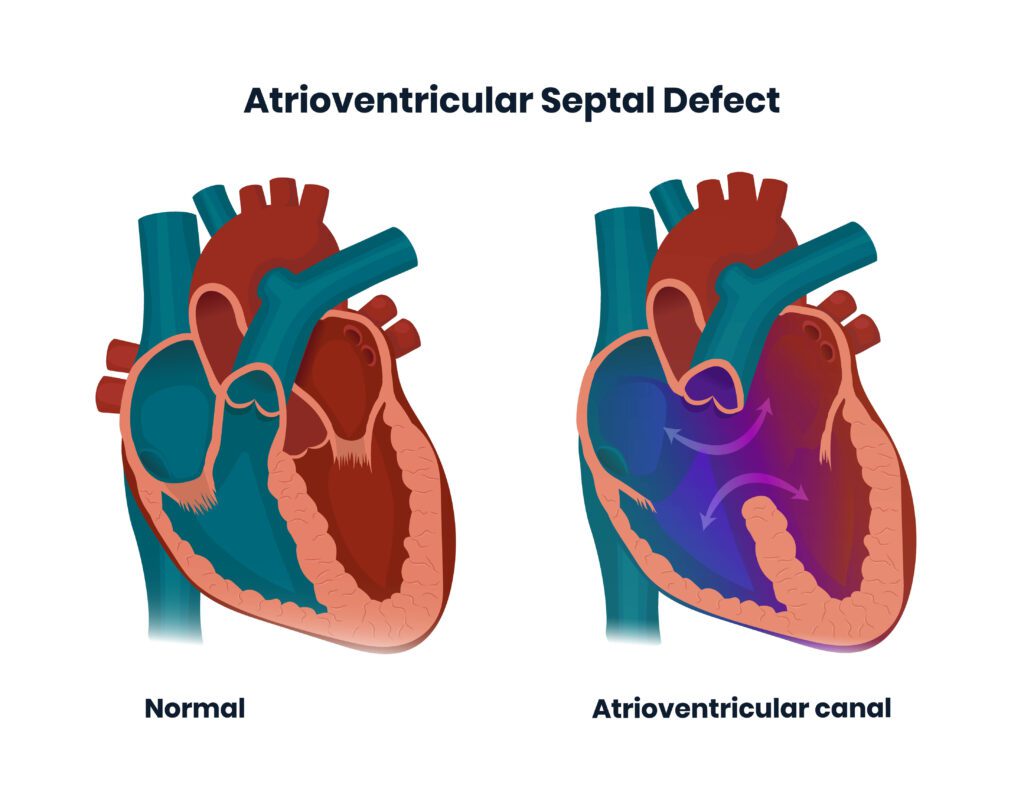
Introduction
Approximately half of all infants born with DS have a congenital heart defect which requires surgical intervention to repair. In a recent study published in the American Heart Association Journal, titled “A CRISPR-Activation CROP-seq Screen Identifies HMGN1 as a Dosage-Sensitive Regulator of Heart Defects in Down Syndrome,” researchers aimed to identify specific genes on chromosome 21 that contribute to the commonly occurring heart issues in people with DS.
What is Congenital Heart Defect (CHD)
A congenital heart defect (CHD) is a problem with the structure of the heart that is present at birth. These defects can affect how the heart works and how blood flows through it. CHDs can vary in severity, from mild conditions that may not cause problems to more serious defects that require medical treatment or surgery. These defects can be diagnosed through various tests, like echocardiograms, and some children may need surgery or other treatments to correct or manage the condition.
About the Study
The study, “A CRISPR-Activation CROP-seq Screen Identifies HMGN1 as a Dosage-Sensitive Regulator of Heart Defects in Down Syndrome” looked at the genes that may cause heart problems in people with Down syndrome. Scientists used special stem cells from a person with mosaic DS (condition in which only some cells have an extra chromosome 21) to compare between trisomy 21 cells and those with two copies of chromosome 21. This allowed them to study the development of heart cells in both cases. Scientists used the CRISPR gene editing technology to test 66 different genes on chromosome 21 to find the ones responsible for heart defects in DS.
Key Findings
1. Scientists used human stem cells along with mouse models to identify genes that contribute to heart defects in DS.
2. Researchers discovered that the gene HMGN1, located on chromosome 21, plays an important role. An extra copy of HMGN1 disrupts normal heart development causing defects.
3. Scientists also looked at individual heart cells from DS models and found that these cells also had an unusual response, similar to the case of HMGN1 high levels.
4. Researchers tested mouse models of DS by removing the extra copy of HMGN1 gene which resulted in fewer heart defects. This proved that elevated HMGN1 levels can alter heart development, contributing to defects.
Conclusion
Scientists utilized a new method combining CRISPR gene editing and single cell sequencing to find important genes linked to different genetic disorders like congenital heart defects. The study identified HMGN1 as a critical gene influencing heart defects in Down syndrome. This research suggests that if scientists are able to control HMGN1 levels, they might be able to prevent some heart problems in the future. Research studies like this help improve the overall understanding of genetic effects in Down syndrome, leading to new discoveries about other health challenges and development of targeted treatment options in the future. It is a big step towards improving heart health and overall quality of life for individuals with DS.